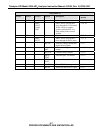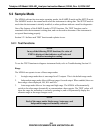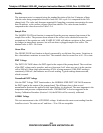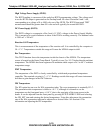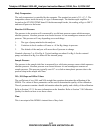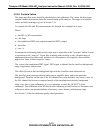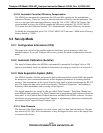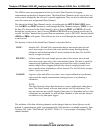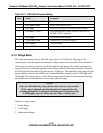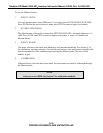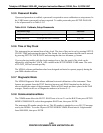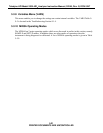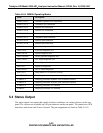
Teledyne API Model 200A NO
X
Analyzer Instruction Manual, 02246, Rev. G, DCN 5247
The M200A comes pre-programmed with a set of useful Data Channels for logging
concentration and predictive diagnostic data. The default Data Channels can be used as they are,
or they can be changed by the user to fit a specific application. They can also be deleted to make
room for custom user-programmed Data Channels.
The data in the default Data Channels can be viewed through the SETUP-DAS-VIEW menu.
Use the PREV and NEXT buttons to scroll through the Data Channels and press VIEW to view
the data. The last record in the Data Channel is shown. Pressing PREV and NEXT will scroll
through the records one at a time. Pressing NX10 and PV10 will move forward or backward 10
records. For Data Channels that log more than one parameter, such as PNUMTC, buttons labeled
<PRM and PRM> will appear. These buttons are used to scroll through the parameters located
in each record.
The function of each of the default Data Channels is described below:
CONC:
Samples NO
x
, NO and NO
2
concentration data at one minute intervals and
stores an average every hour with a time and date stamp. Readings during
calibration and calibration hold off are not included in the data. The last 800
hourly averages are stored.
PNUMTC:
Collects sample flow and sample pressure data at five minute intervals and
stores an average once a day with a time and date stamp. This data is useful for
monitoring the condition of the pump and critical flow orifice (sample flow)
and the sample filter (clogging indicated by a drop in sample pressure) over
time to predict when maintenance will be required. The last 360 daily averages
(about 1 year) are stored.
CALDAT:
Logs new slope and offset every time a zero or span calibration is performed,
also records the sample concentration reading just prior to performing a
calibration.
NOTE:
This Data Channel collects data based on an event (a calibration) rather than a
timer. This Data Channel will store data from the last 200 calibrations. This
does not represent any specific length of time since it is dependent on how often
calibrations are performed. As with all Data Channels, a time and date stamp is
recorded for every data point logged.
The attributes of the data collecting channels can be changed, and new data collectors can be
defined. A comprehensive guide to programming the DAS interface is available separately from
Teledyne API, order “DAS Manual” p/n 02837. Table 5-5-7 is an example of changing a DAS
channel attribute.
5-15
PRINTED DOCUMENTS ARE UNCONTROLLED



